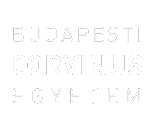Varga, Zsuzsanna Eszter (2022) Hunting for Attention: Luxury and Fast Fashion Campaign Photo Analysis from a Visual Perspective. BA/BSc szakdolgozat, BCE Kommunikáció és Szociológia Intézet, Kommunikáció- és Médiatudomány Tanszék.
|
PDF
- Requires a PDF viewer such as GSview, Xpdf or Adobe Acrobat Reader
5MB |
Absztrakt (kivonat)
The aim of the present thesis is analysing advertisements and campaigns of selected luxury and fast fashion brands from a visual rhetorical approach. By comparison, it will aim to find the visual rhetorical differences that characterise these two fashion categories, and the methods by which these two classes try to distinguish themselves or assimilate to each other. Luxury brands face serious problems which greatly affect the form of their communication, and this is nothing more than the accelerated rhythm of fashion business which is majorly caused by the rising star of the fast fashion industry and the appearance of smaller but demanding new fashion brands. The social media presence of the 21st Century has significantly changed and intensified the advertising mechanism. The most important yield of this structure is that advertising tools became cheaper, more accessible, and constantly available for both parties. The group's goals –to keep and expand their customers' sphere – are unchanged, but the stakes became higher than they were. Research hypotheses: • The visual rhetoric and marketing strategies of fast fashion and luxury fashion brands differ in terms of the visual rhetoric and aesthetic complexity they use • The visual alignment of fast fashion brands with the strategies of luxury brands can be demonstrated • Luxury brands must employ continuous visual and communication innovations in order to maintain their prestige and attractiveness. The theoretical basis of the research is provided by the main models of semiotic theories. Ferdinand de Saussure's diadic model (signifier, signified), C. S. Peirce's triadic model (interpretant, object, representamen) and Roland Barthes' pair of concepts (denotation connotation) help to understand the functioning of signs and to analyse images more precisely. The historical perspective of the research is provided by a chapter on the definition of fashion and the historical differences between the luxury and fast fashion segments. The research’s methodology of the thesis is a qualitative content analysis and a survey specifically tailored for this research in order to examine both the sender and the receiver end of the advertisements. The analyses try to encompass the changes that have taken place in the field of fashion marketing in the past 10 years. One of the main conclusions of the research is that the visual strategy of fast fashion and luxury fashion differs in the following elements: the former uses natural colours, poses, harmonious structures, the latter favours dissonant compositions, strong colours, narrativity and all of this is adapted to the story and character of the brand. The other conclusion is that fast fashion brands are slightly aligned visually to luxury fashion brand’s visuality, but it seems they don’t want to cross a line which is risky from a marketing point of view. The third important conclusion is that luxury fashion brands are part of a bigger cultural system and therefore the need for innovation is triggered not just by the rules of the market, but from inner artistic motives.
| Tétel típus: | BA/BSc szakdolgozat |
|---|---|
| Témakör: | Marketing |
| Azonosító kód: | 15301 |
| Képzés/szak: | Communication and Media Science |
| Elhelyezés dátuma: | 26 Jan 2023 09:27 |
| Utolsó változtatás: | 26 Jan 2023 09:27 |
Csak a repozitórium munkatársainak: tétel módosító lap

